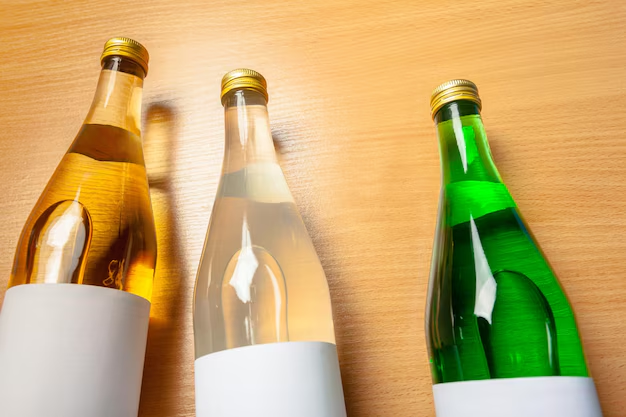Is Storing Wine in Your Refrigerator a Good Idea? A Comprehensive Guide
Storing wine correctly is a pivotal concern for both enthusiasts and occasional drinkers alike. A question often asked is, can you store wine in a refrigerator? This inquiry might initially seem straightforward, but it unfolds a complex dialogue about wine preservation, optimal storage conditions, and the impact of different environments on wine quality. Let’s delve into the intricacies of this topic, uncovering essential insights that can enhance your understanding of wine storage.
🥂 Understanding Wine Storage Basics
The Importance of Temperature
One of the most crucial factors in wine storage is temperature consistency. Wine thrives at a stable temperature, usually between 45°F to 65°F. Fluctuations in temperature can lead to rapid aging and potentially damage the wine. Thus, stability is key.
Humidity: An Essential Factor
Humidity levels also play an important role. Ideally, wine should be stored in an environment with about 70% humidity. This helps maintain the integrity of the cork, preventing it from drying out, which could allow air to seep into the bottle and spoil the wine.
Light and Vibration: Often Overlooked Concerns
Excessive light exposure can harm many wines, particularly those stored over long periods. UV rays can break down and prematurely age wine. Additionally, minimizing vibration helps sediment settle, essential for wines kept over time.
🍷 The Refrigerator Debate
Pros of Storing Wine in a Refrigerator
Consistent Temperature: A regular refrigerator provides a stable, cool environment around 40°F, which temporarily can be beneficial for certain wines.
Short-term Storage Solution: For wines meant to be consumed soon, a refrigerator offers a convenient, short-term storage option.
Protection Against Heat: Heat is a major enemy of wine. The cool environment of a fridge offers a buffer against unexpected heat spikes.
Cons of Storing Wine in a Refrigerator
Improper Temperature: While fridges are cool, they often run colder than is ideal for long-term wine storage, which could affect wine flavor and aroma.
Lack of Humidity: Refrigerators are typically not humid enough, which may dry out corks and introduce air to the wine.
Vibrations and Light: Regular opening and closing can increase light exposure and vibration, affecting the wine's quality.
Summary: To Store or Not to Store?
- Ideal for Short-Term: If you plan to enjoy the wine within a few days to a couple of weeks, the refrigerator is a viable option.
- Not Suitable for Aging: For long-term storage or aging, a dedicated wine fridge or proper cellar conditions are preferable.
🥳 Exploring Alternatives to Fridge Storage
Wine Coolers: Tailored for the Task
A wine cooler is specifically designed for maintaining wine at optimal storage conditions. These appliances generally offer:
- Temperature Settings: Tailored to specific wine types.
- Humidity Control: Protecting cork integrity.
- Reduced Vibration and Light: Designed to minimize external disturbances.
Wine Cellar or Dedicated Storage
For serious collectors or those with space, a wine cellar provides an environment conducive to long-term aging, with:
- Naturally Stable Environments: Often found underground or climate-controlled.
- Protection from Elements: Shielding against temperature, humidity fluctuations, light, and vibrations.
Using a Dark, Cool Space in Your Home
For those without the means for specialized storage, a dark, cool closet or a basement can approximate ideal conditions, with certain precautions taken to minimize light and vibration.
🍇 Wine Types and Best Practices for Storage
Red Wines
- Best Served: Slightly below room temperature, around 55°F - 65°F.
- Storage Tip: Keep away from vibrations and ensure bottles are stored horizontally to keep corks moist.
White Wines
- Best Served: Chilled, around 45°F - 50°F.
- Storage Tip: Can tolerate the cooler temperature in the refrigerator, especially when consumption is planned within days.
Sparkling Wines
- Best Served: Very cold, around 40°F - 50°F.
- Storage Tip: Short-term storage in the refrigerator is less impactful due to the immediate consumption preference.
Dessert Wines
- Best Served: Chilled, varies significantly by type.
- Storage Tip: Can do well in a refrigerator for short periods pre-consumption.
📋 Key Takeaways: Storing Wine Wisely
Here is a summary of the crucial points to consider when storing wine in a refrigerator:
- 📆 Short-Term Storage: Suitable for wines intended to be consumed soon.
- 🌡️ Temperature: Ideal refrigerator temperature is cooler than necessary; best for short durations.
- Humidity Matters: Take caution against drying corks over long periods.
- Alternatives Available: Wine coolers or cellars provide better solutions for long-term needs.
- Type-Specific Needs: Consider the wine type and serving temperature for the best experience.
🍇 Final Thoughts: Choosing the Right Storage
While refrigerators present a readily available option for storing wine, they are best suited for short-term needs. For those interested in preserving the integrity and quality of wine over longer periods or enhancing its aging potential, investing in a wine cooler or a dedicated storage space is invaluable. Understanding your wine storage needs and the characteristics of different types of wine will empower your decisions, ensuring each bottle is enjoyed at its finest.
By integrating these insights into your wine-storing practices, you can maintain your collection in a manner that respects the craftsmanship of winemaking and satisfies personal preferences. Happy sipping!
